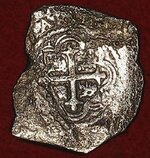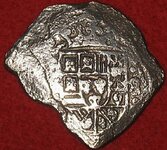Michigan Badger
Gold Member
I picked this one up 5 minutes ago via ebay BUY-IT-NOW.
Now experts...what do you think?
Here's the sellers description and I'm posting the pictures. I won't have it in hand for a few days so this is all I have at this stage of the game.
Thanks ahead of time...you're all awesome!
"PICTURED ABOVE IS A BEAUTIFUL AND CHUNKY 8 REALE SPANISH COB. THIS COIN WEIGHS 24.5 GRAMS OF PURE SILVER. IT WAS FOUND METAL DETECTING AFTER A STORM IN AN AREA KNOWN FOR SPANISH TREASURE NEAR VERO BEACH, FLORIDA. THIS COIN COULD HAVE POSSIBLY BEEN FROM ONE OF THE SHIPS OF THE 1715 FLEET. MEXICO MINT IN THE REIN OF PHILLIP V OF SPAIN."
Now experts...what do you think?
Here's the sellers description and I'm posting the pictures. I won't have it in hand for a few days so this is all I have at this stage of the game.
Thanks ahead of time...you're all awesome!

"PICTURED ABOVE IS A BEAUTIFUL AND CHUNKY 8 REALE SPANISH COB. THIS COIN WEIGHS 24.5 GRAMS OF PURE SILVER. IT WAS FOUND METAL DETECTING AFTER A STORM IN AN AREA KNOWN FOR SPANISH TREASURE NEAR VERO BEACH, FLORIDA. THIS COIN COULD HAVE POSSIBLY BEEN FROM ONE OF THE SHIPS OF THE 1715 FLEET. MEXICO MINT IN THE REIN OF PHILLIP V OF SPAIN."








